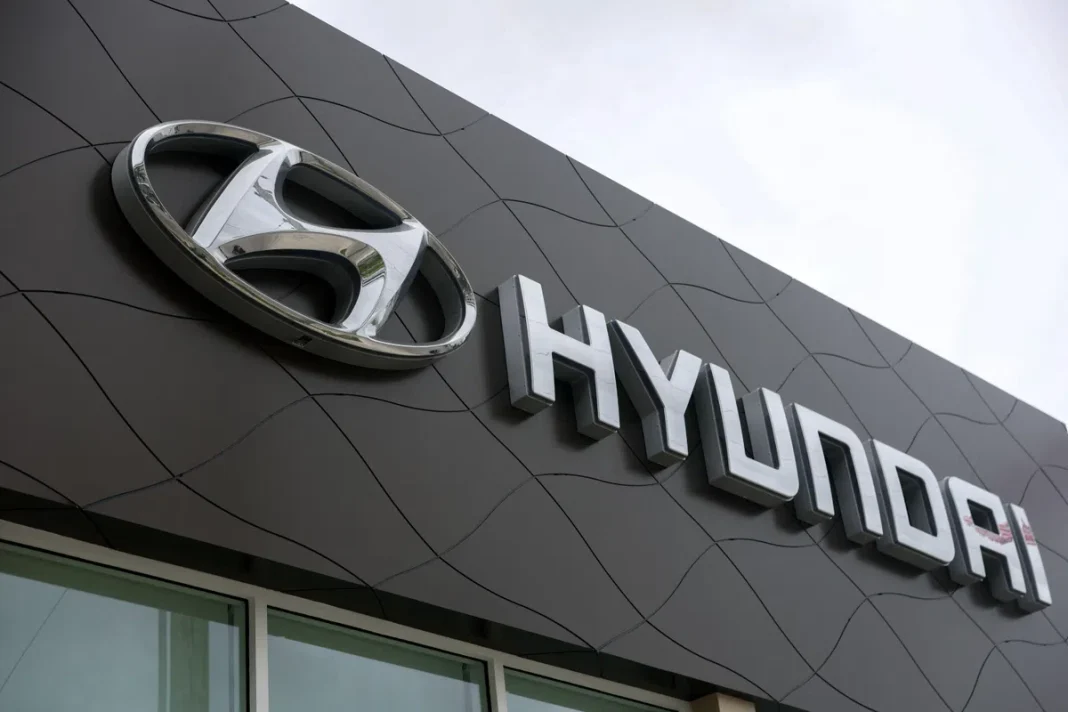On March 25, 2025, Hyundai Steel made a groundbreaking announcement that it would be investing $5.8 billion to construct a state-of-the-art steel plant in Louisiana, USA.
The plant is set to have an annual production capacity of 2.7 million tonnes of steel, a move designed to supply Hyundai’s growing manufacturing plants in the U.S.
The announcement was part of Hyundai Motor Group’s broader $21 billion investment plan aimed at strengthening its foothold in the North American market, which also includes significant investments in electric vehicle production and other automotive technologies.
However, despite the promising potential of this investment, Hyundai Steel’s stock response was markedly volatile.
Initially, the stock surged by over 5% in response to the announcement, but this optimism quickly waned, and the shares ultimately closed down by 7%. In this analysis, we will dissect the implications of this investment, the stock market reaction, and the factors contributing to the subsequent volatility in Hyundai Steel’s shares.
The Investment: Strategic Rationale
Hyundai Steel’s decision to build a new steel plant in the U.S. appears to be a strategic move aimed at several key objectives:
-
Supporting Hyundai’s U.S. Manufacturing Operations: The new facility is intended to supply high-quality steel to Hyundai’s existing vehicle production plants in Alabama and Georgia. These plants are crucial to the company’s North American automotive operations, where demand for steel has remained high due to the expansion of electric vehicles and SUV models. By localizing steel production, Hyundai Steel can reduce transportation costs and mitigate risks tied to potential supply chain disruptions, especially in light of global events like the COVID-19 pandemic and the ongoing trade tensions between the U.S. and other major steel-producing countries.
-
Job Creation and Local Economic Impact: The new plant is expected to create more than 1,400 jobs, which will not only benefit Hyundai but also provide a significant boost to the local economy. The state of Louisiana has been actively courting foreign direct investment, and Hyundai’s commitment to building a plant in the state is a testament to its economic potential.
-
Reducing Exposure to Tariffs and Trade Barriers: Hyundai Steel’s decision to build the plant could also be seen as an effort to reduce its exposure to the tariffs imposed by the Trump administration on steel imports, which have been a major point of contention in U.S. trade policy. By producing steel locally, Hyundai Steel may avoid import duties and ensure more stable, cost-effective production for its U.S. operations.
-
Long-Term Growth Potential: The investment is not just about the immediate supply of steel. The plant is also a long-term commitment to the growing automotive market in the U.S., particularly as electric vehicle adoption increases. Hyundai Steel can leverage this facility to serve the rising demand for specialized steel alloys required in the production of electric vehicle batteries and other high-tech components.
The Stock Response and Volatility
Despite the seemingly promising nature of this investment, Hyundai Steel’s stock exhibited significant volatility in the days following the announcement. Here’s an overview of how the stock reacted and the factors behind the fluctuations:
-
Initial Surge: Optimism About the Investment Hyundai Steel’s stock initially surged by over 5% on the back of the announcement. Investors were optimistic about the long-term growth prospects of the company, given the strategic nature of the investment in the U.S. market. The plant was seen as an important step in strengthening Hyundai’s position in the global steel market, particularly in North America, where Hyundai has substantial automotive production operations.
Furthermore, the creation of over 1,400 jobs, along with the promise of reduced transportation costs and better control over steel supply, were seen as positive indicators for Hyundai Steel’s financial stability. Additionally, this move was perceived as aligning with broader market trends toward onshoring production, particularly in light of the shifting dynamics in global supply chains.
-
Subsequent Decline: Concerns Over Debt and Trade Risks However, the euphoria was short-lived. Within hours of the initial surge, Hyundai Steel’s shares reversed course, ultimately closing down by 7%. Several factors contributed to this sudden shift in sentiment:
-
Debt Concerns: Hyundai Steel’s existing debt load became a point of concern for investors. The company’s decision to invest nearly $6 billion in a new steel plant comes at a time when Hyundai Steel is already facing significant financial pressure due to its existing liabilities. The large-scale investment raised questions about the company’s ability to maintain financial stability and manage its debt, particularly as it navigates the volatility of the global steel market.
-
U.S. Tariffs on Steel: Although the investment in a U.S.-based plant was partly aimed at circumventing tariffs on imported steel, the uncertainty surrounding U.S. trade policies remains a key risk. The Biden administration’s stance on tariffs and its trade relations with major steel-producing nations like China and South Korea could change, potentially complicating Hyundai Steel’s future operations in the U.S. The market’s reaction reflects these concerns, as tariffs could undermine the profitability of the plant if they are reintroduced or escalated.
-
Steel Market Volatility: Global steel prices have been notoriously volatile in recent years, and this volatility is expected to continue. Despite the plant’s long-term promise, investors may have reacted negatively to the potential short-term risks associated with fluctuating steel prices, particularly in the wake of the COVID-19 pandemic and the broader economic slowdown.
-
Macro-Economic Factors: Broader market conditions, including inflation and interest rate hikes, may also have influenced investor sentiment. Hyundai Steel’s substantial capital expenditure at a time when economic uncertainty is high could have triggered concerns over the company’s ability to generate a sufficient return on investment in the face of rising operational costs and tightening monetary policies.
-
Conclusion: A Strategic Move with Risk
Hyundai Steel’s $5.8 billion investment in the U.S. steel plant represents a strategic move to strengthen its position in the North American market, support its automotive operations, and reduce exposure to trade risks.
While the long-term benefits of this investment are evident, the stock’s subsequent volatility underscores the inherent risks associated with such a large-scale expansion.
The decline in Hyundai Steel’s stock following the announcement highlights investor concerns about the company’s ability to manage its debt and navigate potential challenges related to global trade policies and steel market fluctuations.
As with any large-scale investment, the success of Hyundai Steel’s U.S. plant will ultimately depend on the company’s ability to execute on its plans effectively, manage its financial risks, and adapt to the evolving macroeconomic environment.
In the short term, investors will likely remain cautious, waiting for more clarity on Hyundai Steel’s financial health and the broader steel market dynamics before reassessing their position.
However, the long-term prospects for the company’s U.S. operations remain promising, provided it can overcome the challenges ahead.
Also Read
Navigating the Volatility: What’s Driving Builders FirstSource (BLDR) Stock’s Recent Swings?

